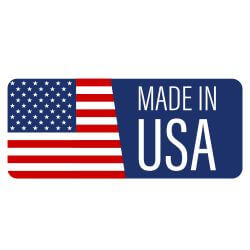As parents, ensuring our children's safety is always at the forefront of our minds, particularly when it comes to the products we choose for them. Fire safety is an essential aspect that often goes unnoticed during the shopping process. In this blog, we will delve into the world of fire retardants, exploring what they are, why they are used, and how they are relevant when selecting items like strollers, car seats for newborn, baby dressers, and newborn high chairs.
What Are Fire Retardants?
Fire retardants are substances that are added to materials to make them less flammable or to slow down the spread of fire. These chemicals can be used in a variety of products, ranging from textiles to plastics, with the goal of enhancing fire safety.
How Fire Retardants Work
Fire retardants work by either delaying ignition or slowing the combustion process through various mechanisms. Here’s a quick overview of how these substances function:
- Chemical Action: Some fire retardants form a protective barrier that prevents the material beneath from reaching its ignition temperature.
- Physical Action: Others release water vapor when heated, which cools down the surface and dilutes the concentration of flammable gases.
- Soot Formation: Certain fire retardants can promote the formation of char, which acts as an insulating layer, slowing down heat transfer.
Understanding these mechanisms helps parents make informed choices when selecting furniture or equipment for their little ones, ensuring that safety remains a priority.
Common Types of Fire Retardants

Fire retardants can be broadly categorized into two types: additive and reactive. Each type has unique applications and benefits.
Additive Fire Retardants
Additive fire retardants are chemically separate from the base material and are mixed in during production. They can be used in various materials, including plastics, textiles, and coatings. Some of the popular categories include:
- Halogenated Retardants: These are highly effective but have raised environmental and health concerns over time.
- Phosphorus Compounds: A safer alternative to halogens, these retardants work by creating a char layer that insulates the substrate.
- Inorganic Compounds: These include substances like aluminum hydroxide and magnesium hydroxide and are often considered non-toxic and environmentally friendly.
Reactive Fire Retardants
Reactive fire retardants chemically bond with the base material during production. This integration often enhances durability and reduces the likelihood of leaching. They are primarily found in textiles and offer long-lasting fire resistance.
How to Avoid Toxic Chemicals
While fire retardants improve safety, some are associated with health risks. To make the best choices, consider the following tips:
- Research Brands: Look for manufacturers that are transparent about their use of fire retardants and offer products that comply with safety standards.
- Eco-Friendly Certifications: Choose certified organic items that meet low flammability requirements without compromising you and your child's health.
- Read Consumer Reviews: Feedback from other parents can often provide insights on safety features in baby products.
Fire Retardants: The Good, The Bad, and The Future
As with any product, fire retardants come with complexities. Understanding both their benefits and concerns is critical for new parents. Industry standards are evolving, and manufacturers are increasingly focusing on developing non-toxic, effective alternatives to traditional fire retardants.
Ongoing Research and Innovations
At the forefront of product safety is research aimed at discovering new, environmentally-friendly fire retardant materials. The hope is that future advancements will prioritize both fire safety and human health, giving parents peace of mind as they shop for essential items like strollers, car seats for newborns, baby dressers, and newborn high chairs.
Making Informed Choices for Your Baby's Safety
Understanding fire retardants is an essential step toward creating a safer environment for your little one. By actively researching and considering fire safety when selecting baby products, you can make informed choices that prioritize your child's wellbeing.
As we continue to navigate the journey of parenthood, knowledge is our strongest ally. Stay informed, be proactive, and prioritize fire safety to create the safest nurturing environment for your newborn.
Explore another user's Shopify store by clicking here. Please note that this is a promotional link, and we assume no responsibility for the content on the linked store.








